On a scale of “good” to “not great,” buying a house with a leaking buried oil tank is usually closer to “not great,” especially when you didn’t know about the tank beforehand.
The good news is that properties with underground oil tanks are rare. But these homes do exist, and tank decommissioning can be a hefty expense. Here’s how you can prepare for any variables that come up along the way.
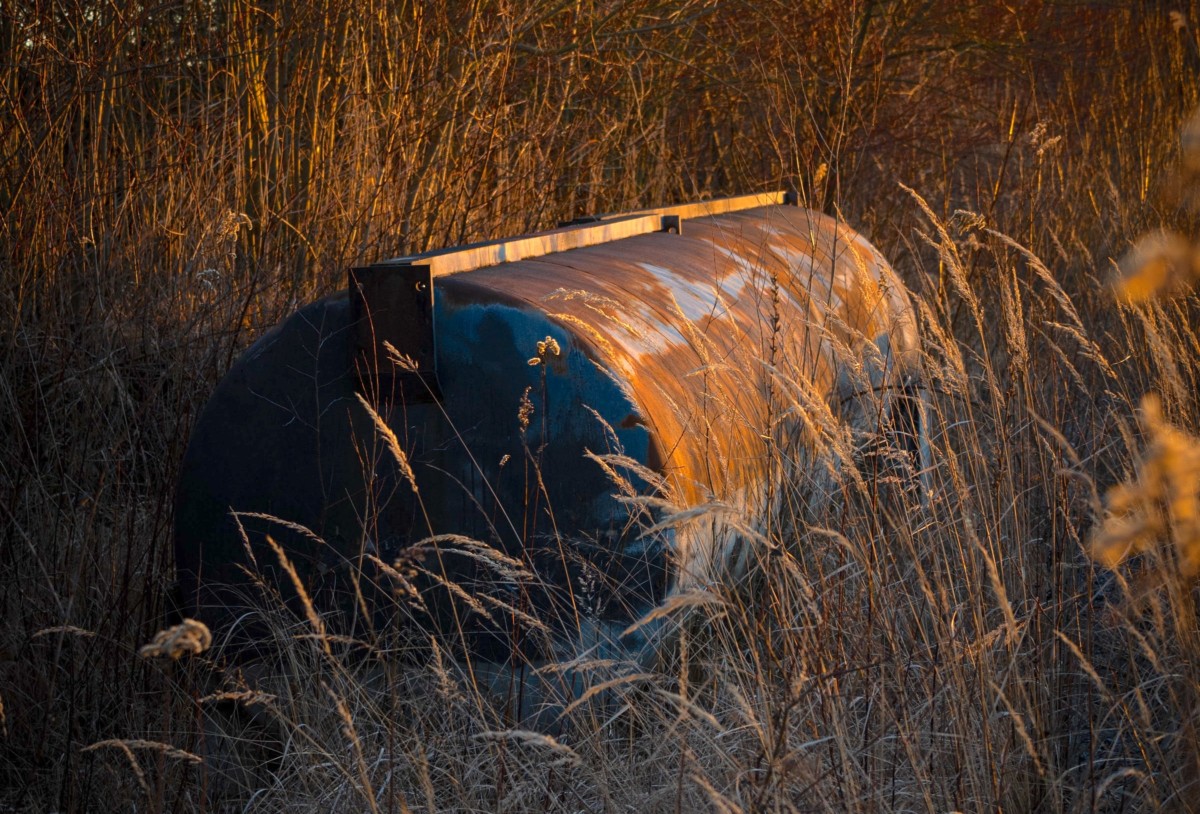
What is an underground oil tank?
An underground oil tank (or buried oil tank) is a large metal container that used to contain or currently contains fuel oil. The oil was used mainly as a heat source for the home.
But why bury them? At the time, it solved two problems:
- It hid the tanks from view
- It made it a lot harder to steal the valuable oil inside
The last 40 to 50 years have seen a dramatic shift from oil to natural gas as the primary fuel used to heat houses. This happened when oil got more expensive and prone to price swings.
Natural gas isn’t that old in the grand scheme of things. In homes in Seattle, WA, for example, natural gas wasn’t piped in until the 1960s. That means any homes built before the 1960s probably had oil-powered heating at one time, even if they use natural gas or electricity now.
You can typically put these homes into one of two categories:
- An old house with an abandoned oil tank
- An old house with a properly decommissioned oil tank
Generally speaking, most oil tanks have been properly decommissioned. Here’s what that means.
Renovating your home?
Find out what your home's worth, edit facts, and see the impact of home projects.
Oil tank decommissioning: Remove the tank or have it filled?
Renovating your home?
If you’ve determined that your property has an inactive or active underground tank, you have a few different options for decommissioning the tank. This is when the tank is “permanently closed” with one of the following methods:
- Capping the tank
- Filling the tank with material like foam or slurry
- Removing the tank from the ground completely
Filling the tank with a substance like polyurethane foam is a popular option since it’s lightweight, eliminates health hazards, and strong enough to keep the tank’s structural integrity intact. Without foam (or a similar filling), a corroded tank could eventually collapse and leave a sinkhole in your yard.
It’s important to choose a reputable oil tank removal professional to decommission your tank. A poor decommissioning job could put you at risk for costly, harmful leaks in the future.
Risks of an underground oil tank
A buried oil tank that hasn’t been decommissioned can increase your risk as a homeowner. This includes:
- Financial risk
- Health risk
- Environmental risk
- Potential legal liability
If an oil tank springs a leak, the cost of cleaning the contaminated soil and water can stretch well into the thousands of dollars. Homeowners insurance rarely covers these costs. If your leak affects a neighbor’s yard or nearby company or government building, it could result in additional expenses or even lawsuits.
Underground oil tank leaks can pose environmental and health risks that shouldn’t be overlooked. If a leak spreads from the soil into the groundwater, it can contaminate it and leave it unusable for irrigation, and could extend to nearby residents and wildlife if it reaches the surface water supply.
Even if the leak doesn’t reach the surface water, concentrated oil vapors can harm your health. It can cause symptoms like headaches and drowsiness in humans and lead to serious health conditions when people are continuously exposed to it.
Homes using oil heat with an underground oil tank
If you’re a homeowner with an active oil heating tank, it may help to add insurance coverage if you haven’t already. Oil tanks and the pipes attached to them are all susceptible to leaks, making them potential liabilities.
Some states offer a helping hand in this area. In Washington, for example, you can register your tank through the Pollution Liability Insurance Agency (PLIA), which offers free insurance to anyone in the state who registers with the program.
If you’re buying a house with active oil heat, ensure the current owner has properly registered the tank. If they haven’t, check your local laws and register the tank as soon as you take ownership of the property. In most cases, the longer the coverage history is, the better.
Should you buy a house with an underground oil tank?
If you’re concerned about an underground oil tank that might be leaking or leak in the future, have the property evaluated by a qualified professional who specializes in oil tank location and decommissioning.
If the contractor says the oil tank hasn’t been decommissioned, you might consider adding full decommission as a contingency.
It’s important not to assume a tank has been properly decommissioned without the right paperwork. Ask the seller for a copy of a decommissioning statement. You can even add it to the property title as a permanent record of the oil tank decommissioning.
It also helps to have the decommissioning statement handy for the next owners if you plan to sell the house in the future.
How to tell if you have an abandoned oil tank
Outside the home, look for the presence of a gas meter and oil tank fill valve or breather tube (also called a “vent pipe”), as shown in the photos below.
If an old oil tank has been decommissioned, the contractor usually removes or cuts the breather tube and fill valve. In this case, there won’t be any signs of an oil tank on the exterior.
If you see a gas meter and an oil tank, it could mean the tank is abandoned without decommissioning. When in doubt, always ask a qualified professional.
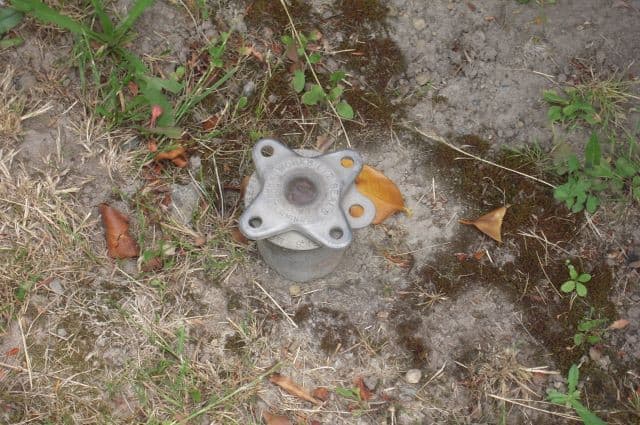
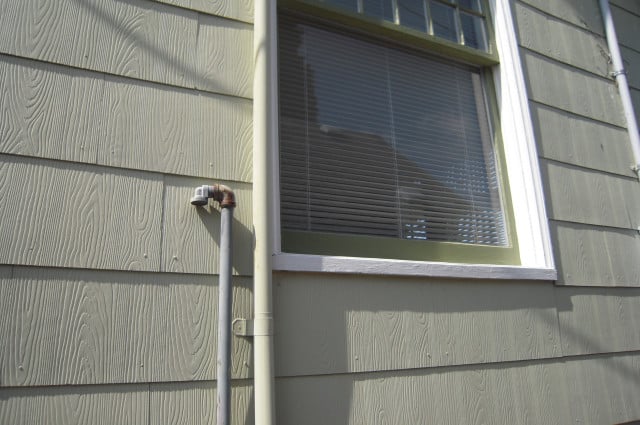
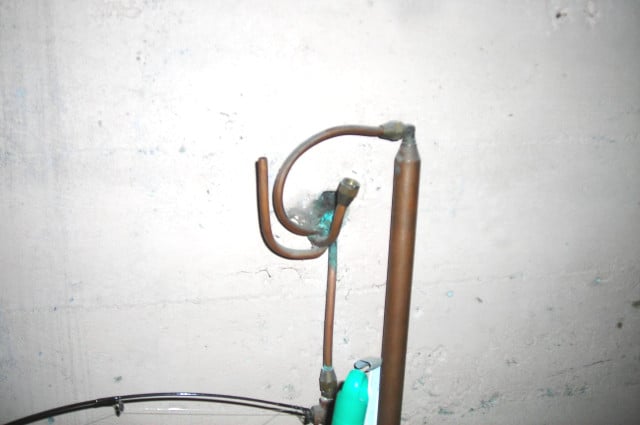
Inside the house, look for small copper lines where the furnace is installed (above). These usually come as a set, and the copper tubes will likely be pinched on the ends. This may mean the house was once heated using oil and may have an underground oil tank.
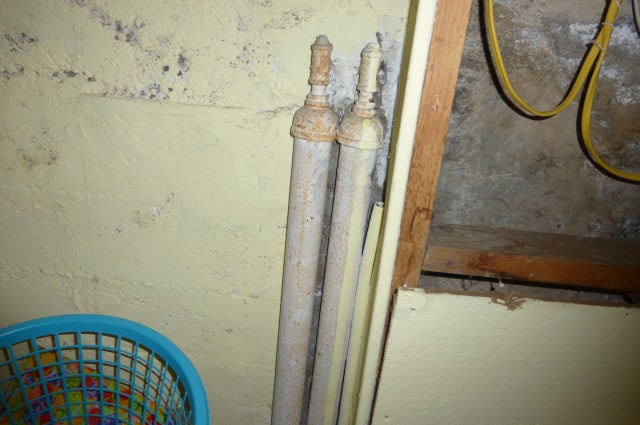
Looking to save money on your mortgage?
Underground oil tank FAQs
How much does it cost to remove an underground oil tank?
Complete oil tank removal can cost anywhere from a few hundred dollars to several thousand dollars, depending on your location, the size of the tank, and other factors. Decommissioning the tank without removing it may cost less in some situations.
How long do underground oil tanks last?
A steel tank generally works well for 10 to 15 years, and as many as 20 to 25 years. The older the tank, the more it’s likely decayed, meaning a higher risk of oil leaks.
How deep are oil tanks usually buried?
Most oil tanks are only buried about 1 to 3 feet underground. They’re usually located no further than 10 feet from the home’s foundation.
Can you sell a house with a buried oil tank?
We know the drawbacks of buying a house with an old oil tank, but what about selling one? Technically speaking, you can usually sell a home with a buried tank, whether they’re decommissioned or not. But you’ll want to check your state and local laws first and be as transparent as you can with potential buyers. Talk to a local real estate agent for more information.
Are all underground oil tanks the same?
No, all kinds of tank and property variables can affect each situation. Some scenarios are simple, while others are complicated with more things to consider. Local professionals can provide the most knowledgeable guidance for the oil tanks in your area.
Can rental homes have buried oil tanks?
Rental homes can have underground tanks just like any other home. The odds increase when it’s located in certain parts of the Midwest or Northeast. For example, many rental homes in Pittsburgh, PA and the surrounding area are older builds with a higher rate of buried oil tanks. If you think there might be an oil tank on your rented property, talk to your landlord about your concerns.
Redfin does not provide legal, tax, or financial advice. This article is for informational purposes only and is not a substitute for professional advice from a licensed attorney, tax professional, or financial advisor.



























 United States
United States Canada
Canada